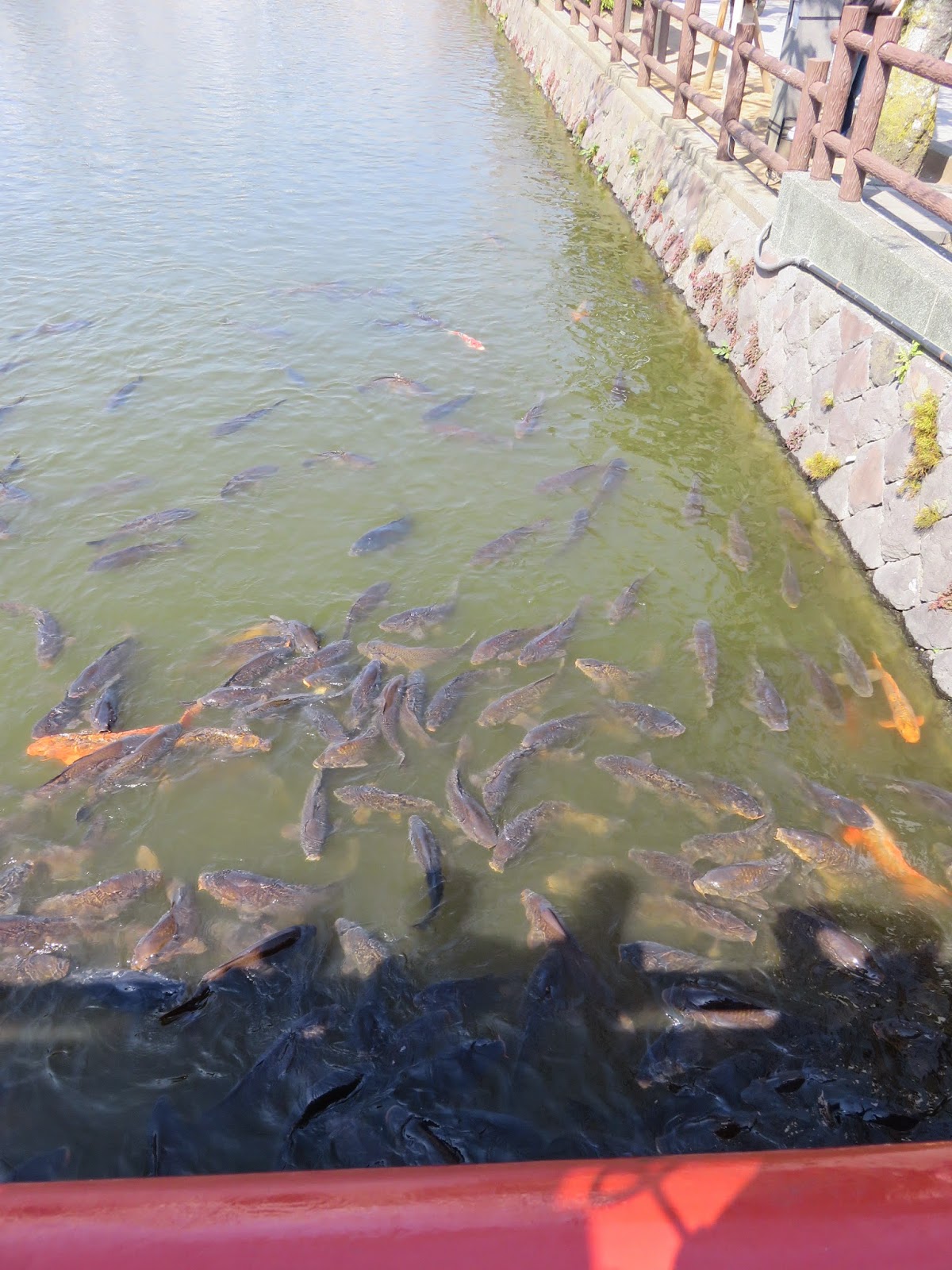Odawara
is a coastal city of around 200,000 people and the main urban centre
in the west of Kanagawa Prefecture, about an hour from Tokyo by
train. Like Kawagoe
up in Saitama, it is a historic and attractive part of the Kantō
Region whose out-of-the-way feel belies its importance in the story
of how Japan became what it is today. For people in or near Tokyo it
makes an excellent day trip, not least in spring when the grounds of
its castle are fantastic for cherry blossoms (sakura).
 |
| Odawara's location relative to Tokyo, in the Odakyu Railway Access Map. |
Odawara
has been settled for thousands of years, but really grew up and
flourished in two capacities: as a massively fortified castle town
during the ~1467-~1603 Warring States
(sengoku)
period, and as a post station on the Tōkaidō
road during the 1603-1868 Edo period. Both roles reflected its
geography, which as in many
places has had a major hand in its destiny. Odawara occupies the
low ground between the Tanzawa mountains to the north and Sagami Bay
to the south, and for anyone travelling west towards the imperial
capital Kyoto, it would have been the last place to rest before
entering the Hakone
caldera, considered the most difficult section of the journey.
Odawara's strategic power over the entire Kantō
plain was therefore immense.
As these pictures suggest, the
castle is a popular site nowadays, not least because of its beautiful
sakura and
great views of the surrounding mountains, towns and sea from atop
the castle keep. Do not think to enjoy these however without some
appreciation for Odawara's story, in which many people suffered.





